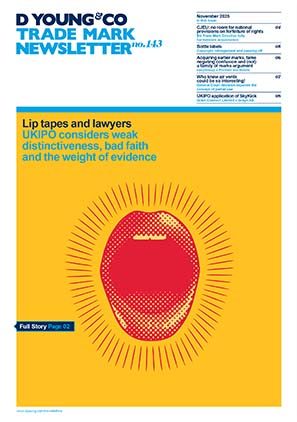CJEU: no room for national provisions on forfeiture of rights - EU Trademark Directive fully harmonises acquiescence
In its recent Lunapark v Hardeco judgement (C-452/24), the Court of Justice of the European Union (CJEU) has delivered a clear message: national procedural doctrines regarding forfeiture of rights have no place alongside the harmonised regime of acquiescence under the EU Trademark Directive (TMD).
The question before the CJEU
The dispute arose between two Finnish confectionery producers, both marketing sweets under the name Dracula. Lunapark filed a national application for the mark DRACULA in 2003, obtaining registration in 2009. Its competitor, Karkkimies, had long used the same name without any registration. When Lunapark finally initiated an infringement proceeding against Hardeco in 2020 (the successor of Karkkimies) the Finnish Market Court dismissed the action. It relied on an established principle of Finnish private law: a claimant must bring an action or otherwise assert their right within a reasonable time following the date on which they became aware, or should have become aware, of the facts on which the claim is based. In the present case, the Finish Court ruled that Lunapark had waited too long to act. On appeal, the Finish Supreme Court referred the question to the CJEU: Does Article 10 of the TMD preclude the application of a national principle under which the proprietor of a trade mark could forfeit the right to prohibit a sign – even in cases other than those covered by Articles 18(1) and 9(1) or (2) of the TMD – if, despite being aware of that use, the proprietor fails to seek a prohibition within a reasonable time?
Article 10 TMD grants exclusive rights to the proprietor of a registered trade mark. These exclusive rights are limited by Articles 18(1) in conjunction with 9(1) and (2) TMD, namely where the defendant owns a later registered mark that cannot be declared invalid, because the proprietor has acquiesced on the use of the defendant’s later registered mark for a period of five successive years while being aware of it. In such cases, the proprietor of the earlier mark cannot take action against the registration and use of the later registered mark unless the later was applied for in bad faith. However, since Article 9(1) TMD applies only to registered later marks, and not to unregistered signs, the question arose, whether national principles can fill this gap. Unlike Article 9(1) TMD, national doctrines for forfeiture do not require the later trade mark to be registered but are based solely on whether the proprietor knew or should have known of the facts giving rise to the claim.
The CJEU’s ruling
The court ruled that Article 18(1) in conjunction with Article 9(1) and (2) TMD fully harmonise the conditions under which a trade mark owner may lose the right to prohibit use due to inaction. Even though that provision only refers to later registered trade marks (not to unregistered signs) it precludes member states from introducing broader national rules, such as general principles of forfeiture. In the court’s view, allowing national doctrines would undermine uniform protection and legal certainty. Therefore, in infringement proceedings concerning national trade mark registrations, no national forfeiture rule applies under any circumstances, unless the precise requirements of Article 18(1) TMD in conjunction with Article 9(1) or (2) TMD are met. As a result, the owner of a national trade mark may always act against infringing use if the defendant holds no trade mark registration, even when the owner was aware of that use.
Commentary and critique
The decision reflects an absolutist interpretation of harmonisation. But the logic falters when compared with the court’s own reasoning in design law. Under Article 88(2) of the Community Design Regulation, national law applies to procedural matters not governed by the Regulation. This applies also to limitations and forfeiture of rights, as the CJEU confirmed in its decision Gautzsch/MBM Joseph Duna (C-479/12). Similarly, Article 129 EU Trademark Regulation (EUTMR) provides that national law governs trade mark matters not covered by the EUTMR. If national law is “good enough” to fill gaps for EU design rights and EU trade marks, why not for national trade marks under the Directive? To resolve this inconsistency, this judgment would also need to be applied to EU trade marks, despite Article 129 EUTMR referring to national law. By excluding national forfeiture doctrines even in cases where the Directive is silent, the CJEU is causing uncertainty rather than resolving it.
In short
Trade mark owners and practitioners should draw one practical conclusion: register early and act promptly. Registration not only confers exclusive rights but also starts the clock on the five-year acquiescence period; a critical safeguard under EU law. So, this Halloween, whether you prefer Lunapark’s or Hardeco’s Dracula sweets, make sure your mark is registered before the vampires, or your competitors, come for you.
Case details at a glance
Jurisdiction: European Union
Decision level: CJEU
Parties: Lunapark Scandinavia Oy Ltd v Hardeco Finland Oy
Date: 01 August 2025
Citation: C 452/24
Link to decision: dycip.com/c-452-24

